Interacting with Particle Auth within applications made using Cocos
Particle Auth for Cocos
Particle Auth also extends to Cocos with the Particle Auth Cocos SDK, facilitating complete integration of Particle's Wallet-as-a-Service within applications building games on Cocos. The utilization of Particle Auth and Cocos is virtually identical in nature to React Native (JavaScript), although the primary differentiator is in prerequisites and initial setup.
This document will outline the setup process; for examples of utilization, see the React Native (JavaScript).
Getting Started
To begin the setup process for the Particle Auth Cocos SDK, you'll need to ensure that your project meets a few initial prerequisites to avoid compatibility issues. These are:
- Cocos 3.7.2 or higher.
- For iOS:
- Xcode 15.0 or higher.
- CocoaPods 1.14.3 or higher.
- iOS 14 or higher.
- For Android:
- Minimum API Level 23 or higher.
- Targets API Level 31 or higher.
- Java SDK version 11.
You'll now need to retrieve three key (and universally required across Particle's various SDKs) values from the Particle dashboard. These values include your projectId, clientKey, and appId.
Retrieving these can be done through the following:
- Sign up/log in to the Particle dashboard.
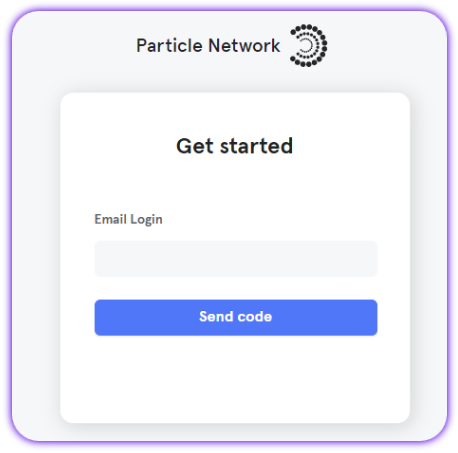
- Create a new project or enter an existing project.
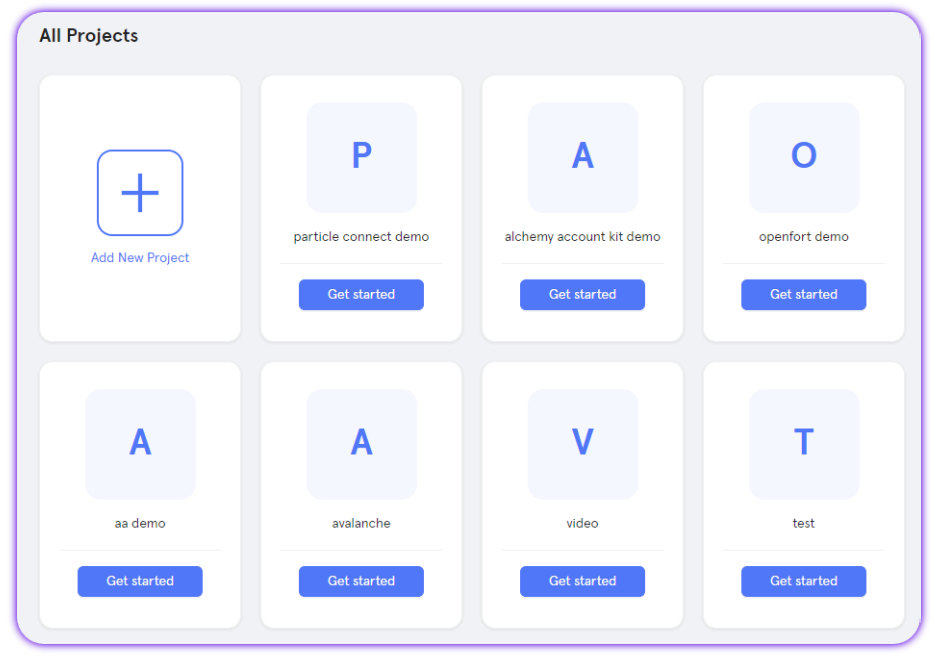
- Create a web application, or skip this step if you already have one.
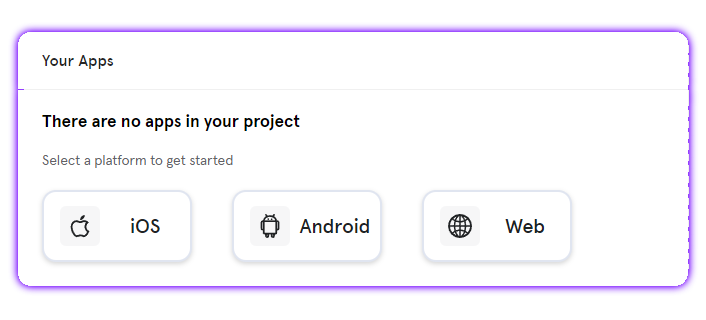
- Retrieve the project ID (
projectId), the client key (clientKey), and the application ID (appId).
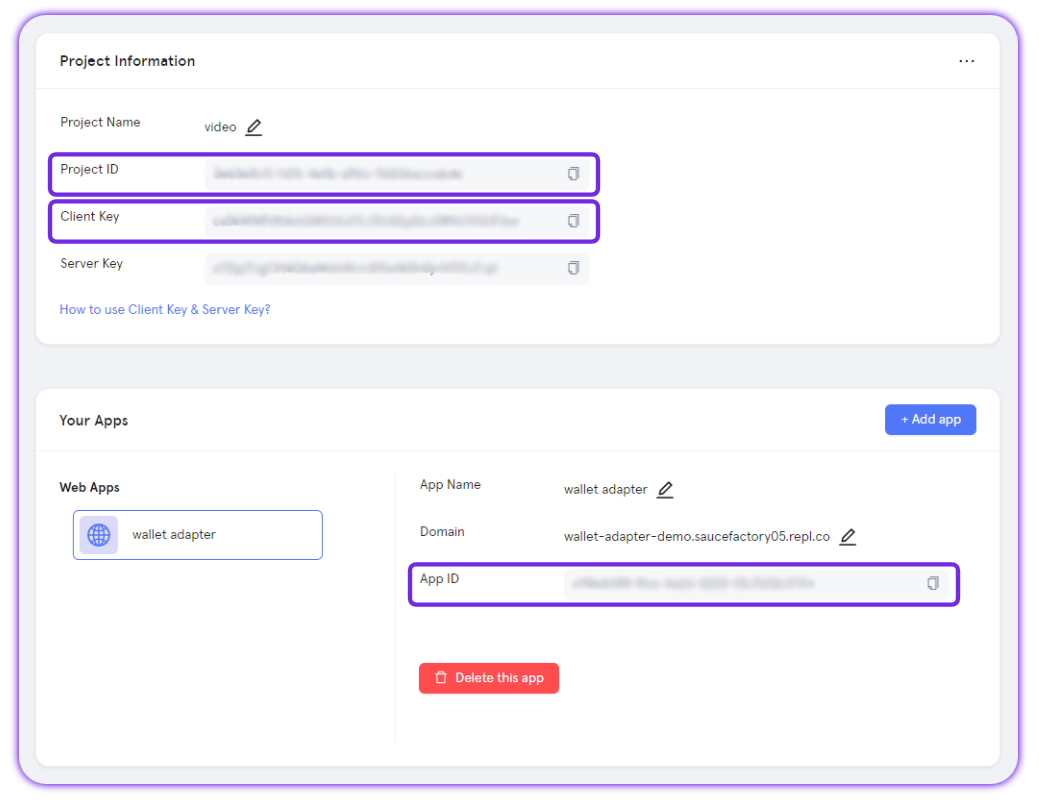
Installation and configuration
To install and begin using the Particle Auth Cocos SDK, you must copy two folders into your project. The first is assets/Mobile/Core from particle-cocos, while the second is native/engine:
- Head over to
assets/Mobile/Corewithin theparticle-cocosrepository. Copy this folder to yourassetsdirectory. - Go to
native/enginewithin theparticle-cocosrepository. Copy this folder to yournativedirectory.
Android
If you're using Cocos on Android, configuration is quite simple and purely requires the placement of the previously retrieved values (projectId, clientKey, and appId) within $exportDir/proj/gradle.properties, such as within the example below.
android.enableJetifier=true
PN_PROJECT_ID = YOUR_PROJECT_ID
PN_PROJECT_CLIENT_KEY = YOUR_CLIENT_KEY
PN_APP_ID = YOUR_APP_ID
iOS
If you use iOS, the initial configuration will be a bit more complicated. To begin, ensure you have a Podfile created. If you don't have one already, head over to the root of your Xcode project directory and run:
pod init
Head into this newly generated (or existing) Podfile and remove all existing contents, then paste the configuration included below. Alternatively, if you're already using other SDKs through CocoaPods, you can simply include the Particle Auth SDK declaration:
ENV['SWIFT_VERSION'] = '5'
platform :ios, '14.0'
source 'https://github.com/CocoaPods/Specs.git'
target 'boost_container' do
use_frameworks!
end
target 'cocos_engine' do
use_frameworks!
end
target 'ParticleCocosDemo-mobile' do
use_frameworks!
pod 'ParticleAuthService'
pod 'ParticleNetworkBase'
end
post_install do |installer|
installer.pods_project.targets.each do |target|
target.build_configurations.each do |config|
config.build_settings['BUILD_LIBRARY_FOR_DISTRIBUTION'] = 'YES'
end
end
end
Additionally, you can go ahead and run pod install --repo-update, then open {your project}.xcworkspace to update and see your project within Xcode.
Now that you've configured your Particle dashboard, installed the SDK, and configured a Podfile, it's time to initialize the SDK with the aforementioned projectId, clientKey, and appId retrieved from the Particle dashboard.
-
Create a
ParticleNetwork-Info.plistfile from the root of your corresponding Xcode project. -
Paste the following text into this file:
<?xml version="1.0" encoding="UTF-8"?> <!DOCTYPE plist PUBLIC "-//Apple//DTD PLIST 1.0//EN" "http://www.apple.com/DTDs/PropertyList-1.0.dtd"> <plist version="1.0"> <dict> <key>PROJECT_UUID</key> <string>YOUR_PROJECT_UUID</string> <key>PROJECT_CLIENT_KEY</key> <string>YOUR_PROJECT_CLIENT_KEY</string> <key>PROJECT_APP_UUID</key> <string>YOUR_PROJECT_APP_UUID</string> </dict> </plist> -
Replace the placeholders with the values retrieved from your project and application within the Particle dashboard.
-
Drop the following files into your project and set the target at the main app. Make sure Base58.swift, Model.swift, and ParticleAuthPlugin.swift are marked within TargetMembership. If Xcode asks to make a Swift bridging file, select "Yes."
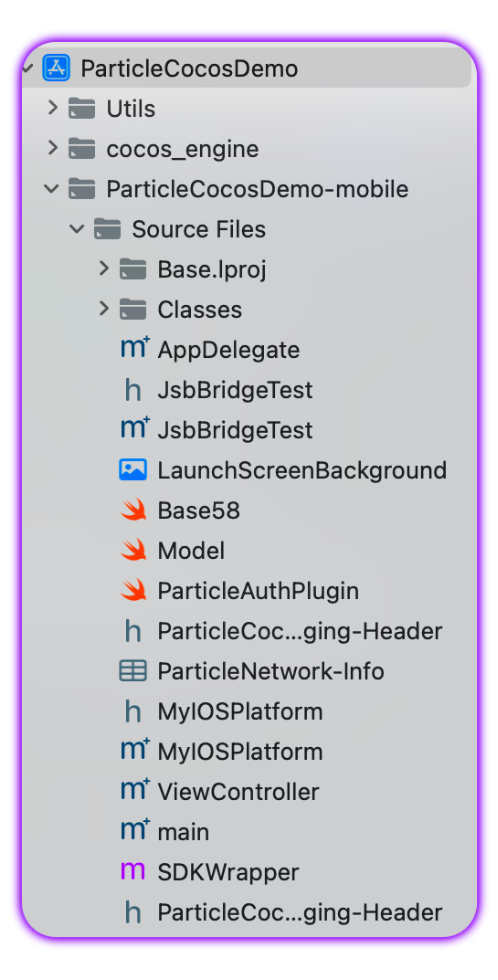
- Open your
AppDelegatefile and include a custom return within the(BOOL)application:openURL:options:method, as shown in the example below:
- (BOOL)application:(UIApplication *)application openURL:(NSURL *)url options:(NSDictionary<UIApplicationOpenURLOptionsKey,id> *)options {
return [ParticleAuthSchemeManager handleUrl:url];
}
- Within
AppDelegate, ensure a project-specific import is included at the top of the file. This should be#import "{project name}-Swift.h".
Important note
JsbBridgeTest.mandJsbBridgeTest.hare vital as they function at the core of bridging JS and native code. To ensure issues don't stem from these files being improperly setup, make sure the code within them is either consistent with the code from the demo or contains code directly from it.
- Finally, to configure your app scheme URL, select your app from "TARGETS" within the "Info" section, click the plus icon to add the URL types, and paste your scheme in "URL Schemes."
Defining a scheme URL
Your scheme URL should be "pn" concatenated with your
projectId.For example, if your project app id is
63bfa427-cf5f-4742-9ff1-e8f5a1b9828f, your scheme URL ispn63bfa427-cf5f-4742-9ff1-e8f5a1b9828f.
Usage
Using the Particle Auth Cocos SDK is identical to the examples showcased within the React Native (JavaScript). The only deviation is the import statement, which should contain an internal path, ../../Core/particleAuth, as shown below:
import * as particleAuth from '../../Core/particleAuth';
